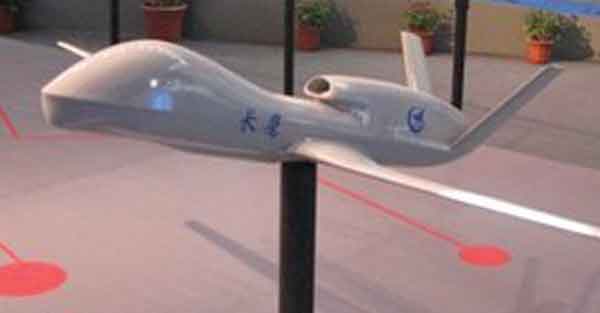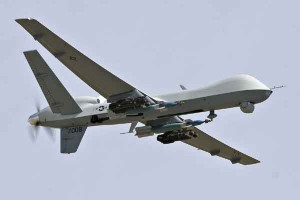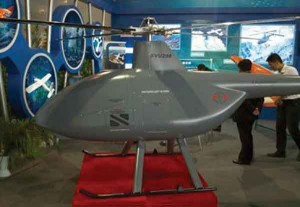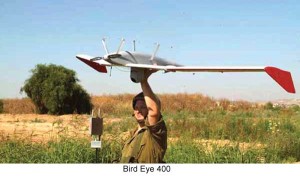China’s massive UAV developmental work has unhealthy implications for India. Soon Chinese capability will be of the latest standard and massive in size. If and when integrated in a manner similar to the Americans, the Chinese will have great knowledge of battle space. The Himalayan terrain is such that it is not easy to conceal and camouflage effectively. The stealthy nature of newer UAVs will make it difficult for India to intercept them.
Research into Unmanned Aerial Vehicles (UAVs) in China began in the late 1950s. Around this time, USA flew UAVs over China to gather intelligence. In fact, one of the first Chinese UAV was partially developed by reverse engineering the American UAV that was lost over China. The development effort increased in the second half of the 1960s and by the 1980s had grown into three series of products i.e. the Chang Kong 1 drones, WZ-5 high-altitude UAV and small remotely controlled D4s. The UAV design and research organizations were founded in NAI, BIAA and NPU Universities. While UAV programmes in China originally were based on US and Russian designs, today the Chinese researchers are producing original and innovative designs for mini, micro, Vertical Take-off and Landing (VTOL) and flapping-wing UAVs.
China’s military has limited capability and experience with UAVs to date…
With the success of UAVs in recent conflicts, China is looking to position itself as a major user and exporter of UAVs. China’s research and development centres, especially Xian’s Northwest Polytechnic University (NPU), and the Beijing and Nanjing Universities of Aeronautics and Astronautics, have active UAV developmental programmes. The others are the Beijing Technology Company, Beijing University of Aeronautics and Astronautics, China Aerospace Science and Technology Corporation (CASC), Hebei Electric Power Reconnaissance Design Academy, North Western Polytechnic University, Shaanxi Engine Design Institute and Xian ASN Technology Group Company.
China has also acquired UAVs from outside. In 1994, Israel’s IAI Malat sold Harpy UAVs to China and in May 2006, the former was accused of again selling Sparrow UAVs. In August 2006, Japan’s Yamaha Motor Company was accused of selling the RMAX helicopter UAV to Beijing Technology Company which has ties to the Chinese People’s Liberation Army (PLA). The Japanese military, for example, used the RMAX in Iraq for surveillance. Another report said that Yamaha exported 11 UAV helicopters to Beijing’s Poly Technologies and to Beijing Technology Company, both of which also have ties to the PLA.
China is creating an entire production ecosystem for business and GA aircraft…
China’s military has limited capability and experience with UAVs to date. Consequently, the practical application of UAV sensor information to battlefield operations is only in the developmental stage. China’s armed forces have operated the Chang Hong (CH-1) long-range, air-launched autonomous reconnaissance drone since the 1980s. China developed the CH-1 by reverse engineering the US Fire-bee reconnaissance drones recovered during the Vietnam War. An upgraded version of the system was displayed at the 2000 Zhuhai air show and is being offered for export. A PRC aviation periodical reported that the CH-1 can carry a TV, daylight still or infra-red camera.
ASN Technology Group, the biggest specialised UAV R&D Company in China, designed and manufactured the first UAV in China in 1958. In the following fifty years, over 40 different types of UAV were manufactured and in total, over 1,500 UAV have been delivered by ASN. A concept model of China’s new UAV named ‘Anjian’ (Dark Sword) was displayed at the 47th International Paris Air Show in 2007. The aerial combat vehicle was designed by the Shenyang Aeroplane Design Institution under China Aviation Industry Corporation (CAIC), for future aerial combat. The Tian Yi began testing in 2009, as Chengdu’s step toward a future Global Hawk class HALE UAV.
Richard Fisher, a UAV specialist, commented in 2010 that at the 2000 Zhuhai air show, the Guizhou WZ-2000 was revealed. It was a squat twin-jet powered delta winged high-altitude long-endurance UAV, which, by the 2002 Zhuhai show, evolved into a medium-sized UAV, and by the 2008 Zhuhai show, appeared to form the basis for an armed turbofan powered Unmanned Combat Aerial Vehicle (UCAV) similar in size to the US General Atomics MQ-9 Reaper. “Since the 2006 Zhuhai show there appears to emerge a rough division of labour, in which Chengdu and Guizhou concentrate on medium and long range surveillance UAVs and medium-range UCAVs, while Shenyang appears to be concentrating on future long range subsonic and supersonic UCAVs.
The 2006 Zhuhai air show saw the revelation, in model form, of Chengdu’s Tian Yi, which was revealed by internet sources in 2008 to have entered testing. While it is likely to be useful as a medium-range UAV, the Tian Yi also serves to aid the development of Chengdu’s Long Haul Eagle, which is close in size and configuration to the Northrop Grumman Global Hawk. In 2006, Guizhou revealed in model form, its box-wing Soar Dragon UAV, credited with a 7,000km range but there has been no subsequent information on this system.” Also, Shenyang Corporation created a stir by introducing in model form its Dark Sword supersonic UCAV, about which Shenyang has revealed very little. It was described in a small plaque as a ‘fighter’.
There has been some suggestion that this design may have been inspired by South African technical assistance. A new model of the Dark Sword was revealed as part of the 2009 PLAAF Anniversary, an indication that it remains an ongoing programme. At the 2008 Zhuhai air show the forward-swept wing subsonic Warrior Eagle was revealed, also likely a Shenyang programme. This concept appears to be a more realistic goal technologically, if one considers it is well-suited for attack and surveillance missions.1
The known Chinese UAVs, 35 in number, are listed subsequently. As is generally the case, the list of known UAVs far exceeds the ones in service use. The known list includes all developmental efforts and only the highly successful models find their place in Services for operational use. While much is not known about Chinese armed forces with a degree of certainty, we need to factor in the following inputs in trying to forecast Chinese capabilities. We should not think about Chinese aerospace development in exclusively linear terms. Acquisitions that leverage strong Chinese balance sheets and weak western markets can change the dynamics in a disruptive fashion even in an industry with high entry barriers like aerospace.2
In 2009, Avic acquired Fishers Advanced Composite Components, a leading European aero structures supplier that addressed China’s weakness in advanced materials and complex mechanical systems. It followed with the purchase in 2010 of Epic Air, an Oregon–based general aviation kit aircraft manufacturer and in 2011 of Continental Motors the second largest manufacturer of piston engines. But it was the acquisition of Cirrus, an iconic general aviation aircraft manufacturer, which caught the industry’s attention. Cirrus has delivered nearly 5,000 new pistons airplanes – including the best-selling SR 22 family. Add to this, in-country production facilities for Cessna and Diamond aircraft models, as well as an Embraer regional jet production facility in Harbin, and it is clear that China is creating an entire production ecosystem for business and GA aircraft.3
The Chinese industry is supported by excellent infrastructure, abundant funding and a large workforce…
The Chinese industry is supported by excellent infrastructure, abundant funding and a large workforce which has been graduating from low-tech towards high-tech. Frugal engineers at some companies are devising technologies that are cheaper and sometimes better than their rich world equivalents.4 The Chinese government invests a fortune in research and development. By 2020, the Beidou global positioning and navigation systems, a set of 35 satellites equivalent to America’s Global Positioning System, should be in place.5 This would enable Chinese UAV/ISR system their own secure navigation and positioning system.
China’s standard means of forcing technological transfer in any industry is to make it a condition of market access. Israel Aerospace Industries (IAI) is in talks with Avic Aviation Techniques (AAT) of China for collaboration for business jets. If it also transfers UAV related technologies, it will not surprise anyone. IAI has produced many successful UAVs namely Mosquito, Bird Eye 400, Bird Eye 650, Heron I, Heron TP and Eitan. Another major factor has been substantial industrial reforms in the 1990s. The 1998 reforms were more successful and meaningful compared to earlier cosmetic reforms. New incentives including competitive bidding were introduced by Jiang Zemin. The reforms were more market-oriented, encouraged competition and were less reliant on state subsidies. Twenty per cent of the work force comprising two and a half to three million was laid off. Close cooperation with Russia for the fourth generation fighter, with Israel for aircraft and air to air missiles and with France for air to air and air to surface missiles improved aerospace industry.6 Bantly Company producing B–2, a two-seat compact helicopter based in Wichita, USA went bankrupt in1960s. In 1994, a Chinese partnership bought the assets out of bankruptcy and in 2007, the company was acquired by a joint venture between Weifang Tianxiang Technology Group and the People’s Republic of China, the same group that acquired Superior Air parts in 2010. The new owners closed the plant in USA and relocated it to China. There they modified this two seat B–2B helicopter transforming it into the V-750 Unmanned Aerial Vehicle.7








